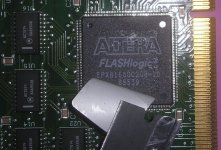I had no idea the 2300 was so similar in architecture. I can completely see what you are talking about. It appears that our two projects do certainly intersect. Anything you learn can be applied to future plans for the BlackBird project, and vice-versa.
I finally figured as much. Major overlap's exactly why I've kept up a running commentary about my unofficial project here in your topic. We're pretty much working different sections of the same jigsaw puzzle.
Your Plan A is a (very cool) practical experiment with alternate avenues available in case of failure. You have a fairly clear path toward building a very complex new board, if and when after either success or failure at first pass. I'm researching methods for doing the least complicated experiment possible next to your Plan A, which is building a 1400 Processor Card. That's the type of simple electron plumbing I can do, no logic involved. Just solder the copper pipe network together correctly, add the proper gate valve for power and it
should be good to go.
The really fun stuff starts when we begin to pull the 2300c architecture apart in order to miniaturize it for fitment into the Blackbird's Faraday cage. :approve:
p.s. to flesh out the post I made above when I was
very tired: PCMCIA/CardBus and the Blackbirds
PCMCIA - "The original standard was built around an 'enhanced' 16-bit ISA bus platform."
CardBus - "CardBus is effectively a 32-bit, 33 MHz PCI bus in the PC Card form factor."
http://www.bixnet.com/pccaandex.html

